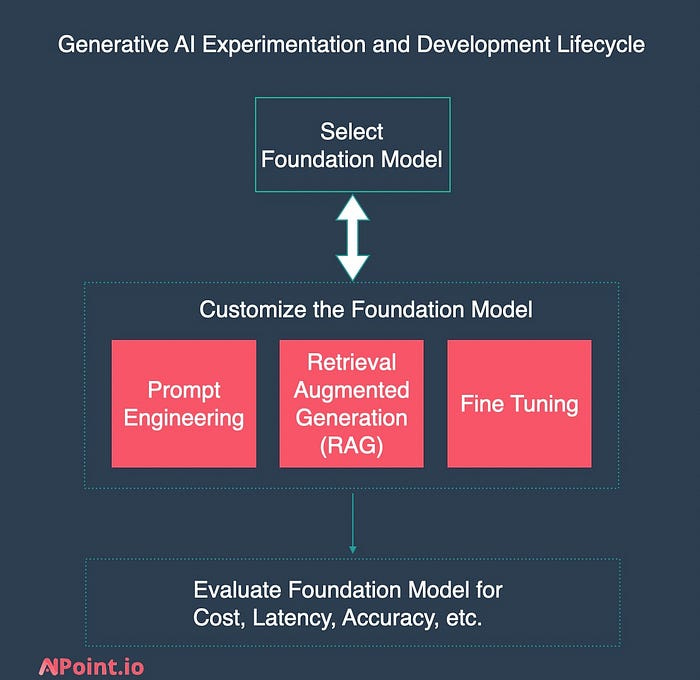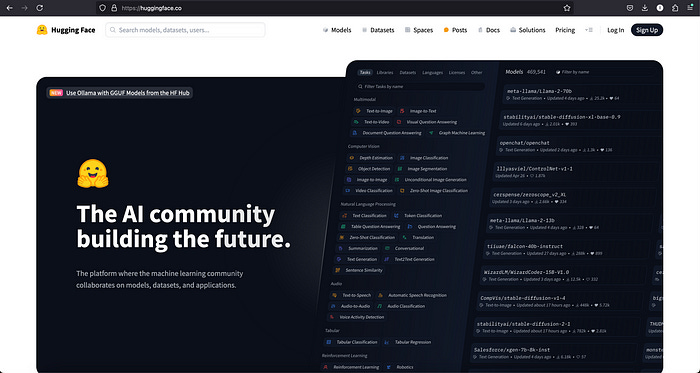How to Choose the Right Foundation Model for Your AI Project
In today’s fast-paced business environment, organizations are constantly seeking innovative solutions to boost efficiency, enhance customer experiences, and drive growth. Generative AI is emerging as a powerful tool to achieve these goals by automating processes, personalizing interactions, and generating content at scale. However, choosing the right foundation model is important for unlocking the full potential of generative AI and ensuring the success of your AI solution.
In this post, we will explore how to select the right foundation model for your project, and I’ll introduce platforms that can help you compare and evaluate different models.
The video recording for this blog is available here.
What is a Foundation Model?
A foundation model serves as the backbone of your AI application. It provides the core capabilities required to perform a variety of tasks, from text generation to image and video generation. These pre-trained models are designed to handle a wide range of tasks across domains and can be fine-tuned for specific use cases.
Choosing the right foundation model is essential because it can dramatically impact the effectiveness and scalability of your AI solution. The model must align with your business objectives and technical requirements.
Key Considerations for Selecting a Foundation Model
When selecting the right foundation model for your AI solution, here are the key factors to consider:
1. Business Use Case Alignment
The first step in choosing a foundation model is to clearly outline your business objectives. Are you aiming to improve customer support with AI-powered chatbots? Or perhaps you want to generate personalized marketing content?
By defining your needs, you can narrow down the models that are best suited for the task at hand. For example:
If your focus is on natural language processing (NLP), models like GPT-4 or BERT are strong candidates.
For text classification tasks, BERT is a great option.
For video generation, models like PyramidFlow may be more suitable.
Each model is specialized for particular tasks, so aligning the model’s strengths with your specific use case is essential.
2. Performance Metrics
Once you have a shortlist of models that align with your task, the next step is to evaluate their performance based on relevant metrics. These could include:
Accuracy: How well does the model perform the task?
Latency: How fast is the model in delivering results?
Scalability: Can the model scale efficiently as your data and demands grow?
Choosing a model with high accuracy but poor latency may not serve your business well if real-time processing is critical. Similarly, ensure the model can handle the scale of data you expect to process.
3. Fine-Tuning Capabilities
Some foundation models come pre-trained and are ready to use with minimal customization. However, others may need fine-tuning to better align with your business requirements. Fine-tuning allows you to adapt a model to your specific dataset or industry, providing better results in niche applications.
If you don’t require fine-tuning, prompt engineering — where you craft specific inputs to guide the model — might be enough to achieve the desired outcomes.
4. Cost Considerations
Cost is another critical factor. The pricing for foundation models can vary widely depending on the model’s size, the cloud platform you’re using, and whether you’re doing inference or training. Some models, especially large-scale ones, can be expensive to deploy and maintain.
For example, we used Amazon Bedrock and AI21 Labs for text generation in one of our projects, and the cost considerations varied depending on the complexity and scale of our use cases. Always consider both the short-term and long-term cost implications of using a particular model.
Platforms for Foundation Model Comparison
Choosing the right foundation model can be overwhelming, but several platforms can help you compare models to make an informed decision:
Hugging Face: One of the best platforms for exploring different foundation models. Hugging Face allows you to browse a wide range of pre-trained models across various categories, such as NLP, image processing, and video generation. You can also see how many people have used a model, look at performance metrics, and assess the model’s popularity within the community.
Amazon Bedrock: This AWS service offers easy access to foundation models from leading providers, including models from AI21 Labs, Anthropic, and Stability AI. Bedrock provides managed services, so you don’t have to worry about underlying infrastructure, allowing you to focus on building your AI solution.
These platforms make it easier to evaluate and compare models based on factors such as cost, performance, and use case suitability.
Conclusion
Selecting the right foundation model is a crucial decision that can influence the success of your AI solution. By considering your business objectives, evaluating performance metrics, and understanding the costs and fine-tuning capabilities of each model, you can choose the foundation model that best fits your needs.
With platforms like Hugging Face and Amazon Bedrock at your disposal, you can streamline the process of comparing models and ensure you make the best choice for your project.
Ready to take the next step in your AI journey? Explore your options, choose the right model, and start building solutions that drive real business impact.





